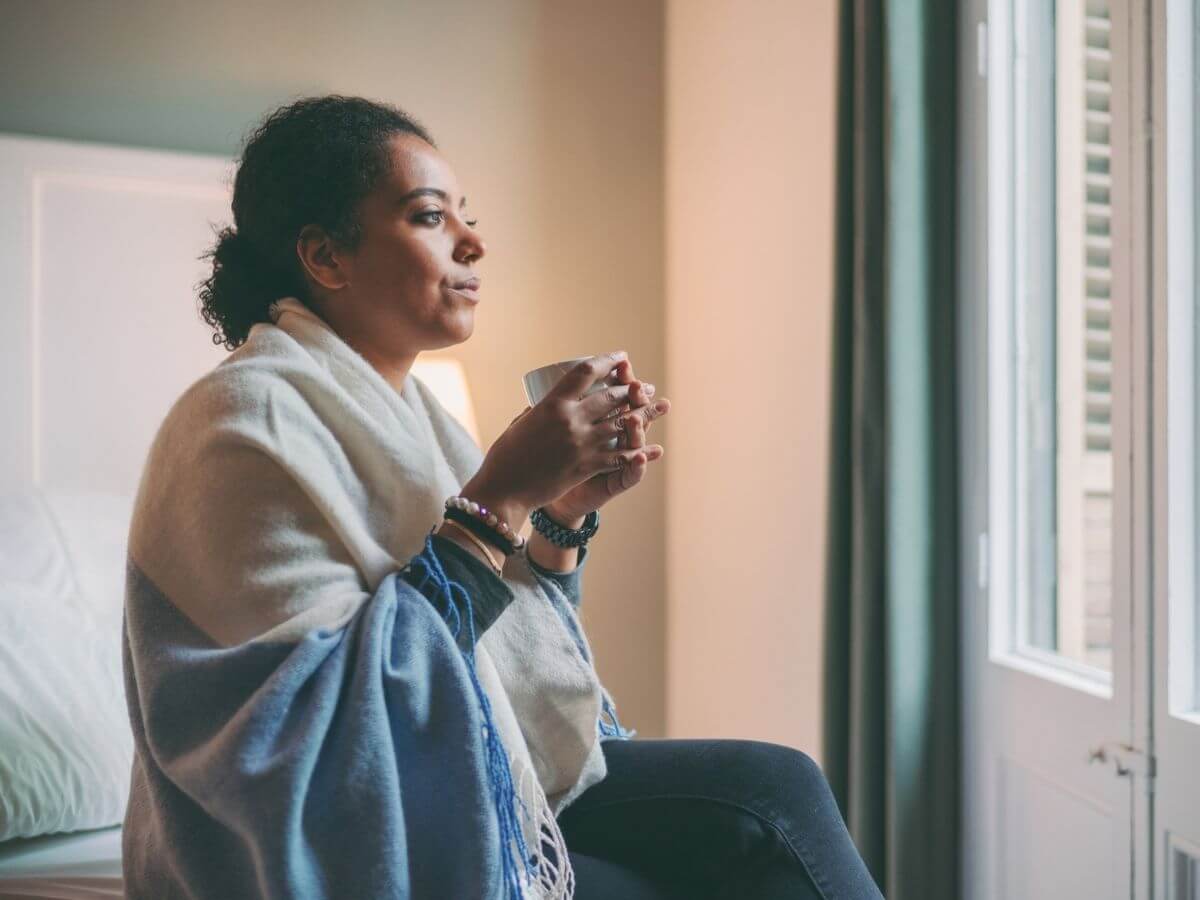Coping with Seasonal Affective Disorder Through Another Pandemic Winter

Seasonal affective disorder (SAD) is a form of depression that tends to occur during the darker, shorter, colder days of the winter months. Its effects typically improve as the days lengthen and the weather gets warmer in the spring.
SAD symptoms can include:
- Loss of motivation
- Sadness
- Decreased appetite
- Unintended weight loss
- Trouble sleeping
- Agitation
- Anxiety
For many people, the COVID-19 pandemic and its negative effects may worsen SAD. Fortunately, if you find yourself struggling to maintain a positive outlook as a result of the combination of less sunlight and pandemic challenges, there are things you can do to boost your mood and improve your overall wellbeing.
8 Tips for Managing SAD During the Pandemic
Below are eight actions you can take to help reduce your SAD symptoms anytime, including during the pandemic.
- Focus on the improvements over last winter. While COVID-19-related challenges are still with us, for most people, they were much greater in the winter of 2020. Today, vaccines are readily available, testing is more accessible, and we’re able to enjoy a higher degree of in-person interactions with others. We’re not back to our pre-pandemic normal, but we’re moving in the right direction, and focusing on that can be comforting.
- Create and stick to a routine. SAD tends to make people feel lethargic and/or anxious. Having a daily routine can help you address both of those issues. Setting and completing even simple goals creates a sense of order and accomplishment that is very therapeutic.
- Practice meditation. Mindfulness meditation can be very useful for people with SAD and anyone feeling stress as a result of the pandemic. With this type of meditation, you learn to focus on what’s happening in the present moment—whether that means sitting in formal meditation and observing your slow, deep breathing or just being more conscious of whatever you’re currently doing. In other words, washing your hands mindfully means immersing yourself in the sensations of washing your hands and steering your mind away from other, distracting thoughts. Part of the stress of living during a pandemic is constantly worrying about what will happen next. Will we go back into lockdown? Will my employer need to lay people off? Mindfulness gives your brain and body a break from those types of thoughts, and even a short break can be beneficial.
- Get regular exercise. Physical activity appropriate for your fitness level is good for your physical and mental health. Simply going for a walk or doing a quick workout in your home can help improve your mood while also supporting your immune system.
- Try light therapy. Many people with SAD benefit from what’s called light therapy or phototherapy. This treatment involves sitting near a light therapy box, which you can do while enjoying other activities like listening to music. If you don’t have a light therapy box, spending time outside or even just sitting by a window when the sun is shining can be helpful. Just be sure to follow best practices about sun exposure, such as wearing sunscreen if you’ll be outside for an extended period.
- Get or stay connected with others. Communicating regularly with others can help reduce SAD symptoms. This may include finding or starting a support group for others who experience SAD or struggle with pandemic-related stress, talking with your religious or spiritual advisor, having regular conversations with family and friends, etc.
- Enjoy comfort foods and activities. Many people find that nostalgia—sentimental feelings toward the past—helps them deal with today’s challenges. Cook a favorite meal from your youth, watch a great movie from decades ago, play a family-favorite game, etc. And when you do, try to immerse yourself in the experience. It can also be helpful to create a list of your favorite activities so that you can refer to it when you need something to boost your mood.
- Contact your doctor or counselor as needed. If you have concerns about the depth or duration of your seasonal affective disorder, you should contact your doctor or therapist. In some cases, professional help may be the best way to address SAD.
Don’t Suffer Needlessly With SAD
Simply enduring your seasonal depression and waiting for the arrival of spring isn’t a healthy strategy. Instead, you should act during the winter months to improve your mood and mental health. Even if you can’t eliminate your symptoms, anything you do to reduce them is a “win” for you and your loved ones.
Learn more about seasonal affective disorder or get help from one of our behavioral health professionals at Baptist Health.
Next Steps and Useful Resources
Find a Provider Near You
Is There a Difference Between the Winter Blues and Seasonal Affective Disorder (SAD)?
10 Ways to Manage Frustration That the Pandemic Isn’t Over Yet
How Can You Help Someone with Depression?



